
A Coaching Power Tool Created by Halina Matsarskaya
(Leadership Presence Coach, UNITED STATES)
The Balance of Being and Doing
 Yin and Yang, seamlessly intertwined and completing each other, these two eternities are in perpetual conflict. The feminine Yin, a reflection of Being, Stillness, Yielding, Absorbing, Following, Defending, and Intuition, anchors and balances out the masculine Yang with its Doing, Action, Initiating, Directing, Expanding, Advancing [1]. This antagonism is mirrored in the clash of those who advocate for Action, aka Doing, as a cure form any mental disease, and those who believe that all answers are rooted in Stillness, or Being. Yet, the Law of Polarity is universal: all opposites, in reality, are two extremes of the same. Hence, without each other Yin and Yang will cease to exist.
Yin and Yang, seamlessly intertwined and completing each other, these two eternities are in perpetual conflict. The feminine Yin, a reflection of Being, Stillness, Yielding, Absorbing, Following, Defending, and Intuition, anchors and balances out the masculine Yang with its Doing, Action, Initiating, Directing, Expanding, Advancing [1]. This antagonism is mirrored in the clash of those who advocate for Action, aka Doing, as a cure form any mental disease, and those who believe that all answers are rooted in Stillness, or Being. Yet, the Law of Polarity is universal: all opposites, in reality, are two extremes of the same. Hence, without each other Yin and Yang will cease to exist.
To live in harmony, both mind and body need action as much as they gasp for quietness. Yet, the delicate balance is easy to break. Should an energy excess build up on any end, either stagnation or exhaustion disrupts the integrity. Then, the question becomes: How to find an equilibrium between Stillness and Action so we live in harmony? The answer resides in the Flow.
When mind and body operate in the flow, we reach the desired outcome effortlessly and joyfully. Conversely, when either one is frazzled or restless, an identical result would eat up energy and resources, as we are forced to push, pull, try to concentrate or exert extra effort in one way or another. It might be tempting to think that all significant historical accomplishments or fundamental discoveries resulted from great efforts; yet, a closer look would reveal that every triumph consisted of unique moments, each and everyone having been lived in the flow of passion, creativity, and joy.
To an equal extent, there is certainly great merit in a last-ditch effort, so we could make it to the top of the mountain or, in a more trivial scenario, finish a project by a deadline. On the other hand, we simply won’t last long if we persistently function at the edge of our capacity on a daily basis. Unfortunately, doomed for fatigue and burn-out, stress and tension, that’s what many human beings(un)intentionally do.
Presence and mindful intent help transcend body and mind into the flow state. To gain a clearer perspective on how excessive effort interrupts the natural life course and to find our way back home to the flow (As kids we used to know it! In fact, we were born to live that way), let’s first take a closer look at these two alternative approaches to living – Effort and Flow.
Effort
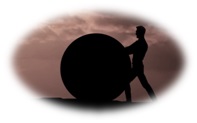 Oxford Dictionary defines Effort as: “A vigorous or determined attempt;” also, “Strenuous physical or mental exertion”[8]. Vigorous, Strenuous, Exertion – each word in the definition of Effort even sounds like great effort!
Oxford Dictionary defines Effort as: “A vigorous or determined attempt;” also, “Strenuous physical or mental exertion”[8]. Vigorous, Strenuous, Exertion – each word in the definition of Effort even sounds like great effort!
Here is how Effort manifests itself in everyday living.
- Endless to-do lists, stemmed from the lost priorities, lay the foundation for agitation and turmoil, as they will hardly ever be executed. They are like an old, shabby bag with the handle torn-off and lost ages ago: awkward to carry, yet unbearable to let go. Meanwhile, sitting on those bags are goal-oriented, determined professionals, who at some point became prone to competitiveness and greed for accomplishments (aka overachievers)and then ended up with too many priorities. Soon, however, an unapproachable behemoth of permanent “busyness” shows its grin. It is so sad, as those individuals are usually the creative types who would have otherwise contributed fascinating ideas for mankind. Nonetheless, often overloaded with endless ideas, they lose focus, and even passion, sabotaging their entire lives. Meanwhile, focus and passion, as we shall further discover, are major components of flow.
- What inevitably follows the strenuous to-do lists is procrastination. We procrastinate with urgent or important tasks that for various reasons don’t seem appealing. So instead, we pretend something else needs our attention this very moment, even if it’s a tiny bit more tolerable and promises a short break. As if out of the blue, the garage that seemed to be totally fine for the last few months, if not years, suddenly needs cleaning, although the tedious report’s deadline is tomorrow. Whereas such“impostor” duty might generate brief pleasure or satisfaction, the unbearable background noise will be constantly bugging us reminding something critical is still due. Then again, we do not fully enjoy the action, so no flow here.
- Although an effort is mostly associated with forceful action required to move us to our goals, passive, idle, or meaningless existence, aka time killers, (e.g., browsing social media with no particular purpose or switching channels on autopilot) is in its core a tedious, albeit fruitless, effort to gain ratification. We wade through this cruel jungle hunting for rest and fulfilment but finding none. Even worse, such empty preoccupation builds stress and tension. This kind of “relaxation” is deceptive, and along with the exertion it clamours for, it deprives our bodies of productivity, our minds of peace, and our souls of joy. It is also some sort of procrastination in its essence and has nothing to do with nourishment and restoration flow gives.
- In the meantime, one of the most notorious representatives of excessive, unnecessary effort, especially in the professional arena, is Multitasking. Some multitasking gurus“manage” to work(or so they believe) on critical reports whilst on a call or during meetings. The result is terrible – reckless typos or even crucial errors, not to mention-endless fatigue. After several hours of vain attempts to finish work while being bombarded by phone calls, emails, and texts, can anyone claim that this was a fulfilling, meaningful work? Probably not, and even if the initial goal was accomplished – the suffering it caused, the depletion it left after will never justify the means.
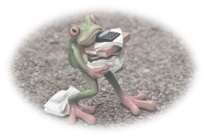 Flow and multitasking are on opposite sides of the barricades. Whenever they meet – multitasking instantly kills the flow. Think about it: to get back on track with the main task after switching from a popped-up text or email would take twice as long than if there were no disruption. Not only are we less productive and continuously disengaged when multitasking, but we also become drained and stressed out so much faster. As a side note, even computers cannot tackle two or more operations simultaneously. What seems like a parallel procedure, in reality, is a rapid shift between the commands undetectable by the human eye.
Flow and multitasking are on opposite sides of the barricades. Whenever they meet – multitasking instantly kills the flow. Think about it: to get back on track with the main task after switching from a popped-up text or email would take twice as long than if there were no disruption. Not only are we less productive and continuously disengaged when multitasking, but we also become drained and stressed out so much faster. As a side note, even computers cannot tackle two or more operations simultaneously. What seems like a parallel procedure, in reality, is a rapid shift between the commands undetectable by the human eye.
“The Myth of Multitasking: How” by Dave Crenshaw was published back in 2008 [2]. Daniel Goleman’sstudies on the importance of focus and mindfulness [3]have been out in the world for decades. Astonishingly, it seems like scientists and the rest of humanity are on different planets. Many companies even now indicate multitasking as a requirement in their job descriptions… Numerous studies have proved – multitasking fails!
On a deeper level, multitasking exemplifies some form of procrastination, a legit excuse to quit boring tasks and somehow get through the unbearably long day. Multitasking is by far the worst enemy of engagement. And without full engagement, it’s next to impossible to reach flow.
Those are just a few examples of a great deal of effort we put into our daily existence. But why so much effort? Isn’t life supposed to be a play full of joy as great minds preach? Flow is riddled with hurdles and rapids:
None of the above behavioural patterns or beliefs is aligned with the nurturing, empowering sensation of flow, and here is why.
Flow
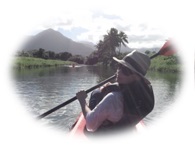 If some of us have ever been in Flow, found our Muse or felt the power and light that Zen seeds in body and soul, the longing for it will never leave us… Zen, Muse, and other terms were used to describe this notion at different epochs or in various aspects of human presence. Even so, an astounding pleasure flow generates in us is all the same. The term flow, in relation to the specific state of mind and body, was introduced a couple of decades ago by Mihaly Csikszentmihalyi, a Hungarian-American psychologist[4]. Flow is also a contemporary version of EasternDao, translated from Chinese as Way or Path of the less resistance [5]. Dao is an empty space, the heart of tornado that remains tranquil despite the wild, devastating forces raging around. Any attempt to row against these forces currents will bring us nowhere at best, though might easily destroy us. On the contrary, if we trust the silence within us, flow organically with the forces, they’ll turn into our genuine servants guiding us to a happier, more fulfilling life – that is, to our true purpose.
If some of us have ever been in Flow, found our Muse or felt the power and light that Zen seeds in body and soul, the longing for it will never leave us… Zen, Muse, and other terms were used to describe this notion at different epochs or in various aspects of human presence. Even so, an astounding pleasure flow generates in us is all the same. The term flow, in relation to the specific state of mind and body, was introduced a couple of decades ago by Mihaly Csikszentmihalyi, a Hungarian-American psychologist[4]. Flow is also a contemporary version of EasternDao, translated from Chinese as Way or Path of the less resistance [5]. Dao is an empty space, the heart of tornado that remains tranquil despite the wild, devastating forces raging around. Any attempt to row against these forces currents will bring us nowhere at best, though might easily destroy us. On the contrary, if we trust the silence within us, flow organically with the forces, they’ll turn into our genuine servants guiding us to a happier, more fulfilling life – that is, to our true purpose.
What is Flow?
To embrace the physical sensation, imagine the crisp, fresh air early in the morning, a quiet river, like a sparkling ribbon, streams around the green pastures and picturesque mountains. A small boat is drifting gracefully along the river, smoothly carrying you away from all the mundane worries… The sun gently kisses the skin, light breeze touches the face, and spectacular views delight the eye. Any moment, you are free to adjust the course: slow down to cherish the view, rest on the river bank, or move on. That is, you possess all the prerequisites to succeed with your goal – a river cruise. For example, you have both inherent and acquired skills, such as sensory perception and ability to row, and you are supported by the perfect conditions – a convenient boat accompanied by the steady river stream and beautiful weather. All of the above allow you to smoothly proceed towards the final destination whilst relishing every single moment of the voyage.
The thrill captivates mind, body, and spirit – this is flow!
In case this flow matter still seems a bit fluffy, the chart below presents the idea from the scientific point of view and could be helpful for visual learners:
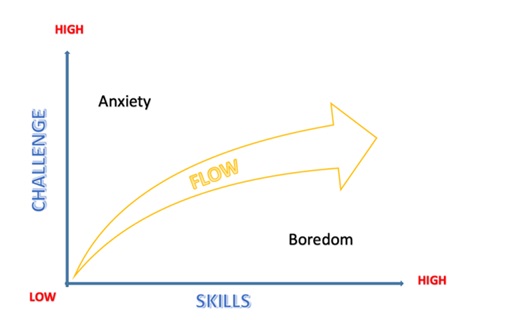
Source: Adapted from Csikszentmihalyi, M. (1990). Flow: The psychology of optimal experience (p.74). New York: HarperCollins [4].
Simply put, if we are overqualified for an activity, the boredom won’t make us wait long. Conversely, if the required skills are missing – we become susceptible to frustration, irritation or even anxiety. In other words, flow is a time span when we feel unconditionally happy and fully engaged in the process while applying our top skills. The skills, in turn, either match the difficulty level of the activity or can be easy obtained on the go.
On an essential level, flow can occur when swimming, running, reading, dancing, climbing, even shopping (as if out of nowhere, we start spotting just the right things!) On a more advanced level, individuals may catch flow when presenting their ideas, painting, designing, writing, or programming – basically during any intellectual or creative activity.
Flow fully unleashes our inspiration; hence, our potential soars. An intellectual or physical activity performed in the flow mode not only results in high quality but also inspires and fosters energy, bringing bliss and happiness all over the course. And it’s not particularly about the result, although for the most part, the exceptional outcome will inevitably show up. Flow is about the journey per se. Being in flow is an ethereal, yet nourishing, feeling when we absorb and live, rather than dwell on and judge.
Now we see what this buzz is all about, and why artists and other artistic souls chase flow with the sole purpose to harness its power. Some have to wait for ages before the Muse would eventually show up and all the hurdles on the tour to their creativity would magically dissolve. Oh, this annoying Writer’s Block! William Faulkner joked, “I only write when inspiration strikes. Fortunately, it strikes at nine every morning.”Here comes a glimpse of hope for all who are still waiting…
Go with the Flow
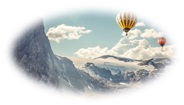 The flow sensation is so pleasurable that the time boundaries evaporate: we forget hunger and other needs until we have fully exhausted our resources and flows influence is over. To recharge, a pause or an alternative activity might be beneficial. The tricky part, however, is to be able to distinguish the signal that our body sends, and consciously decide to pause or change. To do so, mindful presence is a must.
The flow sensation is so pleasurable that the time boundaries evaporate: we forget hunger and other needs until we have fully exhausted our resources and flows influence is over. To recharge, a pause or an alternative activity might be beneficial. The tricky part, however, is to be able to distinguish the signal that our body sends, and consciously decide to pause or change. To do so, mindful presence is a must.
Meanwhile, it’s not hard to recognize our body’s voice – multiple unpleasant vibrations indicate that flow has been interrupted. If we continue to push, drag, press, or suffer in any other frantic manner – that’s not the flow, but rather unmet expectations or an idealized image we created in our head projecting how fast the reality should unfold and in what fashion. Such excessive effort is the reflection of high ambitions, arrogance, and need for control.
On the other hand, being withdrawn from flow too early (due to multitasking, interruptions, or underlying fear to explore our hidden potential) causes disappointment, restlessness, and occasionally even physical pain.
Imagine, how exciting it would be to move through the lifecycle playfully while cultivating productivity, joy, contentment in both leisure and work! Whereas there is hardly a cookie-cutter solution for turning on the flow mode on cue, the chances can skyrocket with a few major prerequisites.
-
Do what you love and love what you do
 A spiritual influencer Eckhart Tolle, the author of “The Power of Now” and “A New Earth,” suggests there are only three possible attitudes to any circumstance for a more meaningful living: Accept, Enjoy, and Enthusiastic. If neither can be applied, then we’d better stop what we are doing immediately [6]. Whereas acceptance is a freeing attitude when we face unpleasant settings, enjoyment and enthusiasm organically surface when we pursue our core values and purpose. Hence, it is the most essential and graceful tactic to reach flow. When we are passionate about the process, any barrier on our route is an exciting adventure. The ultimate goal is to readily abandon anything intolerable all at once, bring in as much enjoyment as possible, and calmly accept the rest.
A spiritual influencer Eckhart Tolle, the author of “The Power of Now” and “A New Earth,” suggests there are only three possible attitudes to any circumstance for a more meaningful living: Accept, Enjoy, and Enthusiastic. If neither can be applied, then we’d better stop what we are doing immediately [6]. Whereas acceptance is a freeing attitude when we face unpleasant settings, enjoyment and enthusiasm organically surface when we pursue our core values and purpose. Hence, it is the most essential and graceful tactic to reach flow. When we are passionate about the process, any barrier on our route is an exciting adventure. The ultimate goal is to readily abandon anything intolerable all at once, bring in as much enjoyment as possible, and calmly accept the rest.
What aspects of your life do you enjoy? _______________________________
What aspects of your life do you feel enthusiastic about? _________________
What aspects of your life can you accept?______________________________
What do you choose to stop right now? ______________________________
-
Show up and be present
We are instantly mesmerized by a person who fills a room. At the very least, we cannot ignore her presence, for we feel it on a deeper level of our subconscious mind. Such individuals radiate passion, empathy, sincere curiosity in us and the situation they are currently in. Those people choose to show up and be present every single moment. They are true influencers, true leaders, true believers. They are in the flow.
When present, our mind is in stillness. Yet, it is not a passive existence which occurs when we stare at the screen or even during sleep or nap (although the last two are critical for healthy functioning). It’s rather active stillness which overarches both being and doing, as such, it is an integral part of the flow. It is vital to inhabit this space of active stillness from time to time (e.g., when meditating), for then we connect to the universal energy source where our ultimate potential resides. It’s a powerful tool. If we immerse ourselves in the active stillness and wait – we will instinctively know the best next step. And with it, confidence and self-trust will surface from within.
Recall the last time you were fully present. What have you become aware of? _____________________________________________________
How can you invite presence more often in your days? ___________________
-
Prioritize and focus
What is most important now?______________________________________
Pausing to reflect on this fundamental question as often as we could, even once a day, would deeply transform our reality. Priorities and focus are intertwined with presence. It’s not about more, but rather what’s truly valuable. If we choose few, yet, stay present with what we chose, pay attention, take proper care of our surroundings and ourselves– the footprintbehind uswill shine… And we will shine with confidence and delight.
 Here is a vivid priority demonstration coming from “Quiet: The Power of Introverts in a World That Can’t Stop Talking” by Susan Cain. The author interviewed a professor who would hand-pick the PhD students for his research group. Notably, being an A-student was not a selection criterion; the professor would rather stick with the students who had both A’s and F’s because it proved that such students prioritized and focused on the subjects they truly cared about [7].
Here is a vivid priority demonstration coming from “Quiet: The Power of Introverts in a World That Can’t Stop Talking” by Susan Cain. The author interviewed a professor who would hand-pick the PhD students for his research group. Notably, being an A-student was not a selection criterion; the professor would rather stick with the students who had both A’s and F’s because it proved that such students prioritized and focused on the subjects they truly cared about [7].
Every so often, we feel a sudden urge to hide in the cave and work on something meaningful, even if only for us – to disconnect from the entire world and connect with our flow. Let’s follow this calling, the world can wait!
Meanwhile, it’s not about our superiority, but about equal respect: we put our priorities first, nonetheless, we respect the time of others.
-
Restore Body and Mind
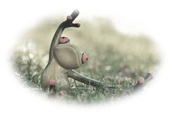 Flow is a fragile substance, and so are our physical bodies and minds. Unwise exploitation will result in burnout, or even worse – a complete loss of appetite for work and life. It can take a while before we recoup our agility and vigour. While there is nothing innately wrong with hard, productive work, it is our responsibility to replenish the exhausted resources in time. But knowing when to pause the key. Our entire body communicates with us all the time –if only we’d listen.
Flow is a fragile substance, and so are our physical bodies and minds. Unwise exploitation will result in burnout, or even worse – a complete loss of appetite for work and life. It can take a while before we recoup our agility and vigour. While there is nothing innately wrong with hard, productive work, it is our responsibility to replenish the exhausted resources in time. But knowing when to pause the key. Our entire body communicates with us all the time –if only we’d listen.
Preserving the intrinsic fire within us boils down to thoughtful, attentive self-care backed up by the well-balanced nutrition. Reconnecting with the body’s needs and natural rhythms via spiritual practice, meditation, and breathing techniques are the most essential and the least expensive techniques to relax. Frequently locked in the boxes of our houses, cars, and offices, we have to be reminded about the sacred, transformative force of nature and its vitality for human health and normal functioning. Fresh air and aquatic procedures will boost immunity and transform the entire organism as if it were reborn. Yet, most consequential is to be kind to ourselves by really practising self-compassion and self-acceptance.
All these strategies help preserve and enhance the energy within us, so it freely flows supporting balanced harmonious living.
Listen to your body. What does it need most right now? __________________
Final thoughts
Though it is no wonder that any excessive effort depletes the energy, we habitually struggle with identifying the sweet spot where Being and Doing are in equilibrium. Yet, flow is the precise measure of this balance. When in the flow – less means more. Indeed, all sophisticated, transformative concepts and astonishing accomplishments were gradually distilled from trivial, tiny steps merely because those brilliant minds responsible for the results more often than anyone else found themselves in the flow. Notably, the body is the most reliable indicator when it comes to the flow substance.
Our multifaceted lifestyles dictate the necessity of diverse approaches when defining what our active and quiet moments are as well as when either has to prevail. The same idea holds true when it comes for the tactics we apply to reach our own flow state – they are all distinct. A powerful coaching process helps to lay out the uniquely designed ultimate strategies and serves as a trampoline for one to bounce and dive right into the flow!
References:
- Adapted from https://www.goldenlion.com.au/yin-yang-relevance-taijiquan-part-2/
- “The Myth of Multitasking: How “Doing It All” Gets Nothing Done” by Dave Crenshaw was published back in 2008.
- Daniel Goleman: “Focus: The Hidden Driver of Excellence” Talks at Google talks. Retrieved from https://www.youtube.com/watch?v=b9yRmpcXKjY
- Adapted from Csikszentmihalyi, M. (1990). Flow: The Psychology of Optimal Experience. New York: HarperCollins.
- Retrieved from https://www.britannica.com/topic/dao
- Adapted from Tolle, E. (2005). A New Earth. Awakening to Your Life’s Purpose. Penguin Group (USA), Inc. ISBN 0-525-94802-3
- Adapted from Cain, S. (2012). Quiet. The Power of Introverts in a World That Can’t Stop Talking. The Crown Publishing Group, a Division of Random House Inc. New York. ISBN 978-0-307-35214-9.
- Retrieved from: https://en.oxforddictionaries.com/definition/effort
Picture credits:
- com
- Halina Matsarskaya, author